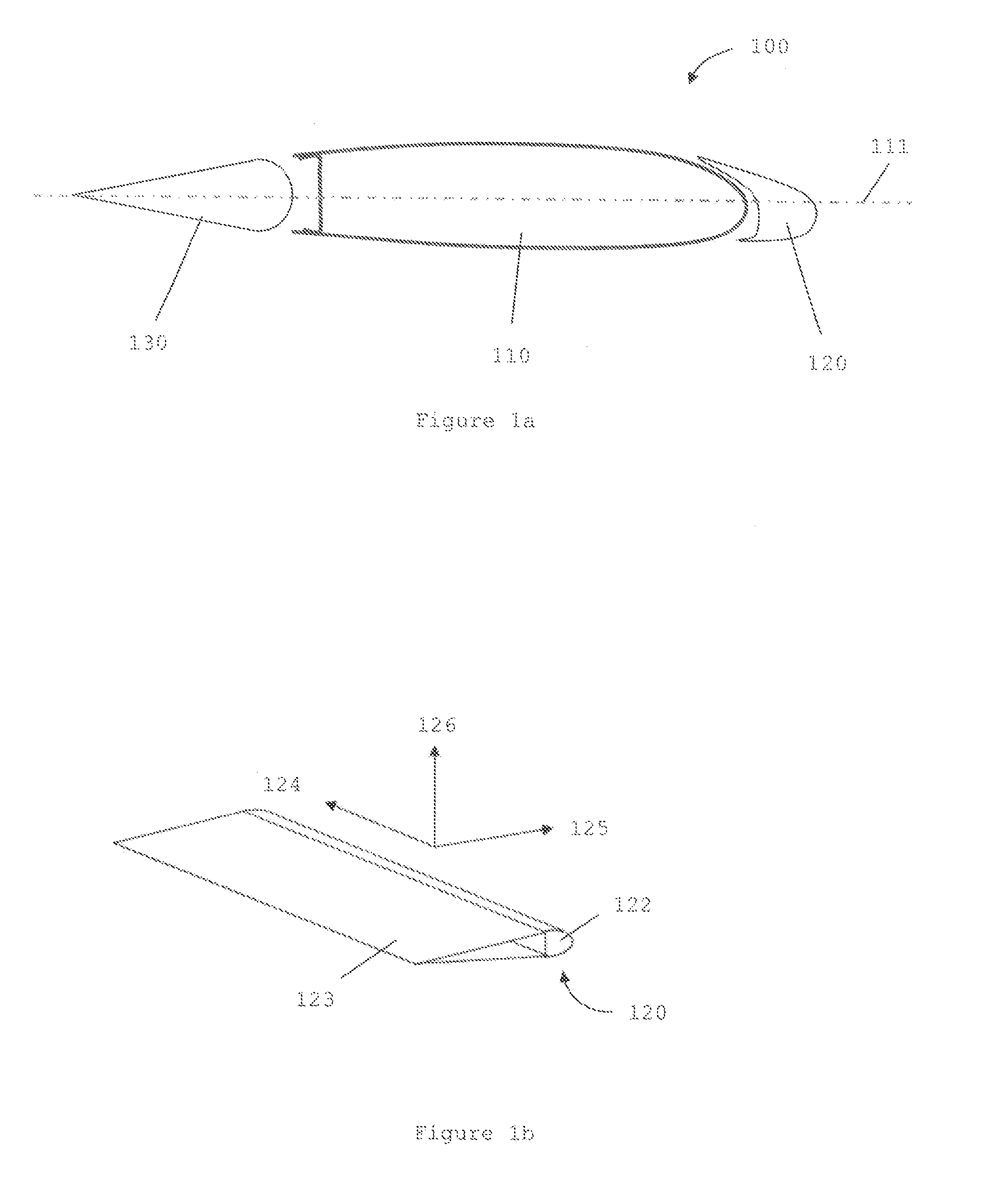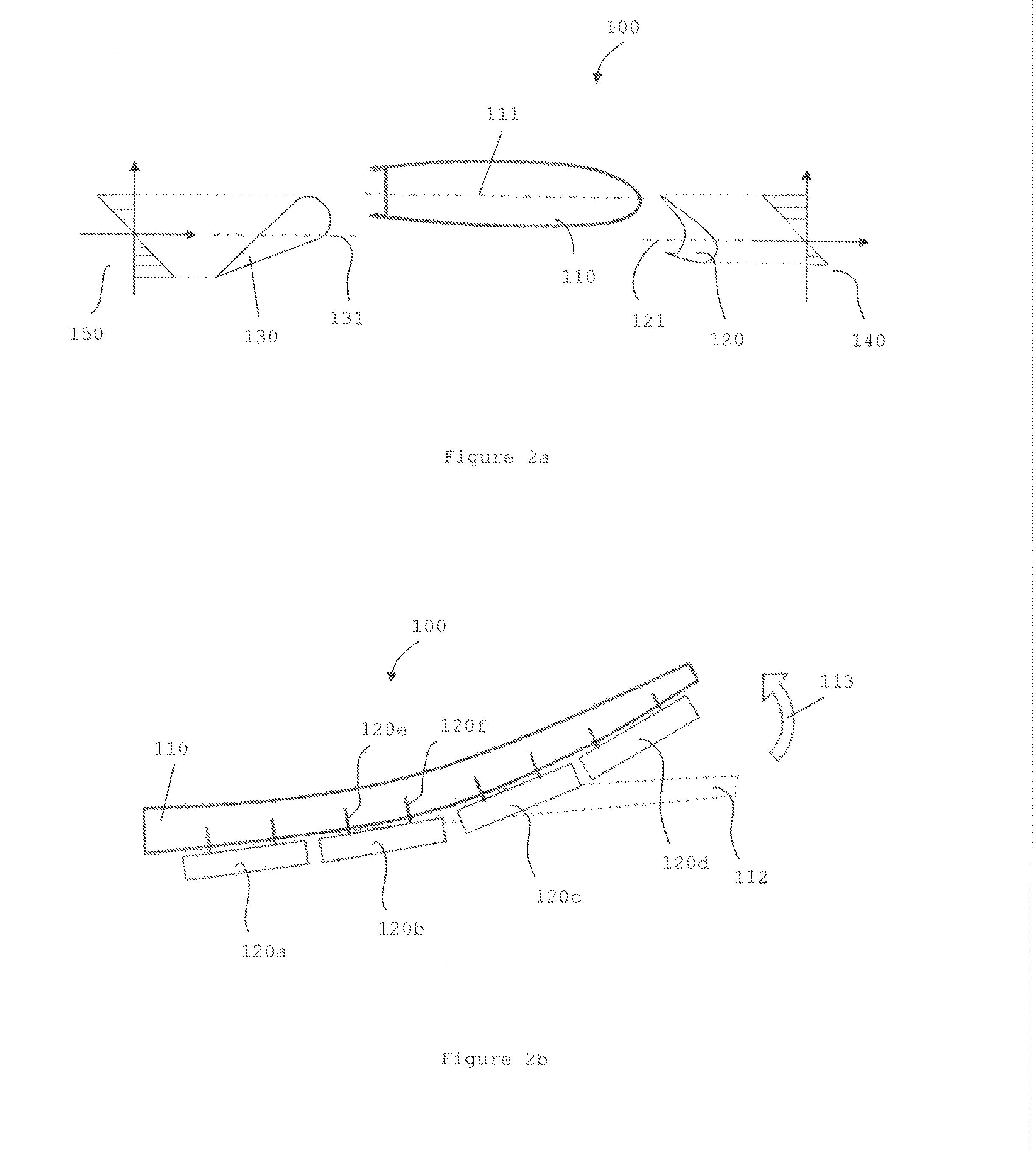Aerodynamic device
a technology of aerodynamic devices and bending loads, which is applied in the direction of airflow influencers, wing adjustments, weight reduction, etc., can solve the problems of reducing the in-plane bending stiffness of the segment, the trailing edge section and the device, and achieves the reduction of the bending load on the device, the in-plane bending stiffness, and the effect of low in-plane bending stiffness
- Summary
- Abstract
- Description
- Claims
- Application Information
AI Technical Summary
Benefits of technology
Problems solved by technology
Method used
Image
Examples
first embodiment
[0096]FIG. 3 shows a schematic perspective view of part of a skin sheet 260 of a trailing edge section of a slat according to the invention. The axes shown on this Figure show a spanwise direction 261 extending along the length of the slat, a chordwise direction 262 extending along the width of the slat and an out-of-plane direction 263 extending upwards away from the slat.
[0097]The skin sheet 260 is part of a sandwich structure of the trailing edge section comprising a core sandwiched between two such skin sheets. The skin sheet 260 comprises a number of composite layers layed out one above the other in the out-of-plane 263 direction. The layers include a first lower layer 266, a second layer 265 and a third upper layer 264. Each layer comprises a number of carbon fibres, orientated in a particular direction. In the first layer 266, the fibres 266a are orientated substantially in the chordwise direction 262. In the second layer 265, the fibres 265a are orientated in the spanwise di...
second embodiment
[0103]FIG. 4 shows a schematic perspective view of part of a skin sheet 360 of a trailing edge section of a slat according to the invention. The directions shown on this Figure show a spanwise direction 361 extending along the length of the slat, and a chordwise direction 362 extending along the width of the slat.
[0104]The skin sheet 360 is part of a sandwich structure of the trailing edge section comprising a core sandwiched between two such skin sheets. The skin sheet 360 comprises a number of “zig-zag” corrugations 364, corrugated (“folded”) in the spanwise direction 361 so as to create channels running in the chordwise direction 362. The skin sheet 360, therefore, is anisotropic, i.e. it has different stiffness characteristics in the chordwise and spanwise directions. The material used for the core is honeycomb and is also anisotropic, i.e. it has different stiffness characteristics in the chordwise and spanwise directions.
[0105]This means that the spanwise stiffness of the trai...
third embodiment
[0107]FIG. 5a shows a schematic perspective view of a slat 420 according to the invention. The slat 420 comprises a D-nose leading edge section 422 and a wedge shaped trailing edge section 423. The trailing edge section 423 is a sandwich structure with a core sandwiched between two skins. The trailing edge section 423 has four chordwise slots 424, 425, 425, 427 in it, effectively dividing the trailing edge portion of the trailing edge section 423 into 5 segments. Each slot extends though the height of the slat, from the trailing edge, chordwise to a forward location (but still within the trailing edge wedge section 423) of the slat. Each slot 424, 425, 426, 427 comprises an elongate section 424a extending chordwise from the trailing edge, ending in a rounded “nodule”424b. The leading edge section 422 also comprises an attachment structure (not shown) for attaching the slat 420 to a wing primary structure.
PUM
 Login to View More
Login to View More Abstract
Description
Claims
Application Information
 Login to View More
Login to View More - R&D
- Intellectual Property
- Life Sciences
- Materials
- Tech Scout
- Unparalleled Data Quality
- Higher Quality Content
- 60% Fewer Hallucinations
Browse by: Latest US Patents, China's latest patents, Technical Efficacy Thesaurus, Application Domain, Technology Topic, Popular Technical Reports.
© 2025 PatSnap. All rights reserved.Legal|Privacy policy|Modern Slavery Act Transparency Statement|Sitemap|About US| Contact US: help@patsnap.com



